



If you’re heading to Vilnius District Municipality,get ready to step into a place where history and nature seem to dance together effortlessly. Unlike the bustling heart of Vilnius city,this district wraps you in a quieter,more intimate vibe—think rolling green hills,serene lakes,and charming villages that feel like they’ve been frozen in time. As you wander through the winding country roads,you’ll catch the scent of pine forests mingling with fresh earth,and maybe even the faint aroma of traditional Lithuanian rye bread baking in a nearby home. What really makes this area special is its deep connection to Lithuanian culture and heritage. You’ll find wooden churches with intricate carvings,folk art workshops where locals still practice age-old crafts,and festivals that light up the community with music,dance,and laughter. The people here are warm and welcoming,often eager to share stories about their land and traditions over a cup of strong coffee or a plate of cepelinai (those hearty potato dumplings you have to try). Visiting Vilnius District feels like slipping into a slower rhythm,where you can hear the birdsong clearly and watch the sun set over shimmering lakes. It’s a place that invites you to breathe deeply,explore gently,and soak in the simple,authentic beauty of Lithuania beyond the city lights. Trust me,it’s the kind of place that stays with you long after you’ve left.
The information on this page is currently being reviewed by Tripkliq and should be used as a guide only
Eng word: Hello
Eng pronunciation: Lah-bahs
Local language: Labas
Eng word: Goodbye
Eng pronunciation: Vee-so geh-roh
Local language: Viso gero
Eng word: Thank you
Eng pronunciation: Ah-choo
Local language: Ačiū
Eng word: How much
Eng pronunciation: Kyehk kai-nuo-yah
Local language: Kiek kainuoja
Eng word: Toilet
Eng pronunciation: Too-ah-leh-tahs
Local language: Tualetas
Eng word: Help me
Eng pronunciation: Pah-deh-kee-teh mahn
Local language: Padėkite man
Eng word: Yes
Eng pronunciation: Taipe
Local language: Taip
Eng word: No
Eng pronunciation: Neh
Local language: Ne
Eng word: Excuse me
Eng pronunciation: Aht-see-prah-show
Local language: Atsiprašau
Vilnius, the capital of Lithuania, was founded in the early 14th century by Grand Duke Gediminas. The city quickly became a significant political and cultural center in the region.
Established in 1579, Vilnius University is one of the oldest universities in Eastern Europe. It has been a major center of education and culture for centuries.
Vilnius is renowned for its Baroque architecture, with the Old Town being a UNESCO World Heritage Site. The city boasts numerous churches, palaces, and historic buildings.
Gediminas' Tower is a symbol of Vilnius and Lithuania. It is the remaining part of the Upper Castle, offering panoramic views of the city and the Neris River.
The Gates of Dawn is one of the most important religious, historical, and cultural monuments in Vilnius. It houses a revered icon of the Virgin Mary, attracting pilgrims from around the world.
The Vilnius Cathedral, located in Cathedral Square, is a key landmark. Its neoclassical architecture and the iconic bell tower are must-see attractions for visitors.
Before World War II, Vilnius was known as the 'Jerusalem of the North' due to its vibrant Jewish community and cultural life. The city still preserves many sites of Jewish heritage.
Uzupis is a bohemian district in Vilnius, often compared to Montmartre in Paris. It declared itself an independent republic in 1997, complete with its own constitution and president.
Vilnius was the capital of the Grand Duchy of Lithuania, one of the largest and most influential states in Europe during the 14th-16th centuries.
In Vilnius District Municipality, the most common Power Adaptor is Type C, Type F.


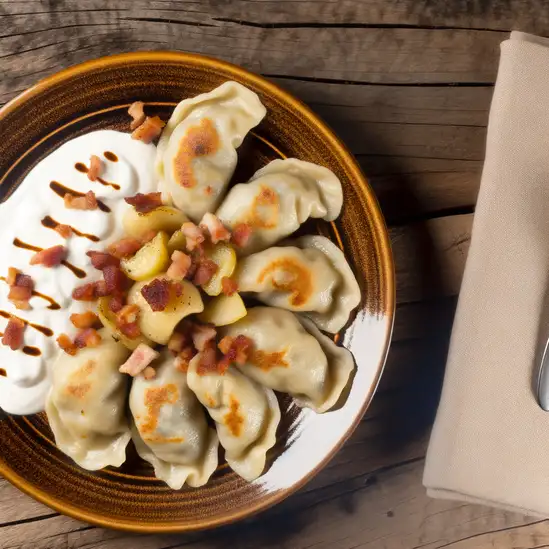
Large potato dumplings filled with meat, often served with sour cream and bacon sauce.
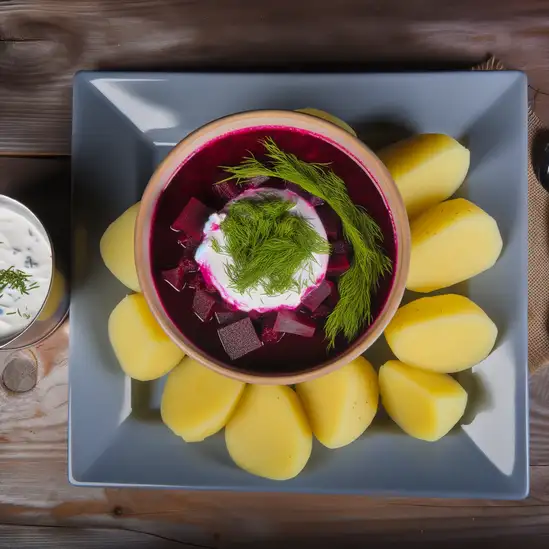
A cold beetroot soup made with kefir, served with boiled potatoes and garnished with dill.

A baked potato pudding made with grated potatoes, eggs, and bacon, typically served with sour cream.
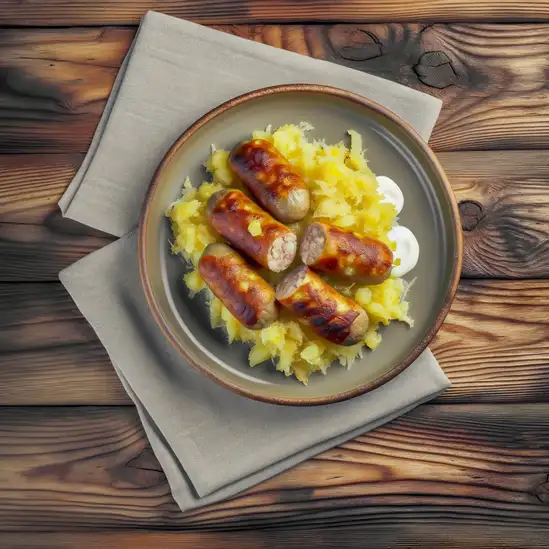
Potato sausages filled with a mixture of grated potatoes, meat, and spices, traditionally served with sour cream.
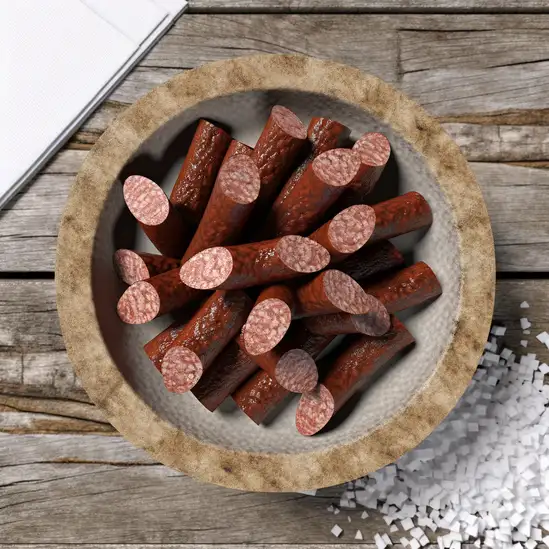
A traditional smoked sausage made from minced meat and spices, often served as a cold cut.

Rye bread, a staple in Lithuanian cuisine, known for its dense texture and rich flavor.
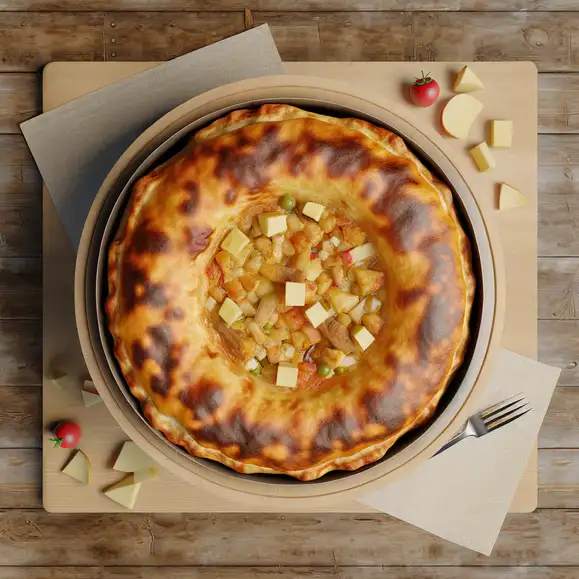
A traditional Lithuanian pie, which can be filled with various ingredients such as fruits, cheese, or meat.
Imagine stepping into a city where every corner feels like a scene from a timeless painting—Venice is exactly that kind of place. The moment you arrive,the gentle lapping of water against ancient stone buildings wraps around you like a soft melody. Instead of streets,there are winding canals,and instead of cars,gondolas glide silently beneath ornate bridges,their oars dipping rhythmically into the emerald water. The air carries a mix of salty sea breeze and the faint aroma of fresh espresso and baked pastries from nearby cafés,inviting you to slow down and savor the moment.
Venice has this magical,almost dreamlike quality. The light here is different—soft and golden in the mornings,casting long shadows on the labyrinth of narrow alleys and colorful facades. You’ll find yourself wandering without a map,getting delightfully lost among the bustling markets,where vendors call out in melodic Italian,selling everything from fresh seafood to vibrant Murano glass. The city’s rich history whispers from every corner,from the grandeur of St. Mark’s Basilica to the quiet charm of tucked-away piazzas where locals sip wine and chat as if time has paused.
What makes Venice truly unforgettable is its rhythm—slow,intimate,and deeply human. It’s a place where you can hear the laughter of children playing by the water,the clinking of glasses in cozy trattorias,and the soft hum of a street musician’s violin. Visiting Venice isn’t just about seeing a city; it’s about feeling its heartbeat,tasting its flavors,and becoming part of its endless story.
Barcelona feels like a vibrant mosaic where every corner pulses with life and color. The moment you step onto its sun-drenched streets,you’re wrapped in a warm Mediterranean embrace—salt in the air,the distant hum of waves mingling with lively chatter from bustling cafés. The city’s energy is contagious,a blend of old-world charm and modern creativity that invites you to slow down and savor each moment.
Wandering through the narrow alleys of the Gothic Quarter,you’ll hear the soft clinking of glasses and the melodic strum of a street guitarist,while the scent of fresh-baked bread and roasting coffee drifts from cozy bakeries. Barcelona’s architecture is like a living art gallery—Gaudí’s whimsical buildings,with their undulating lines and vibrant mosaics,feel almost dreamlike against the bright blue sky. It’s a place where history and imagination dance together.
Food here is a celebration in itself. Imagine biting into a perfectly crispy,golden croqueta or savoring the rich,smoky flavors of a traditional paella,all washed down with a glass of chilled cava. The city’s markets,like La Boqueria,burst with colors and aromas—ripe tomatoes,fresh seafood,and fragrant herbs—that make you want to taste everything.
What makes Barcelona truly special is its spirit:a city that lives passionately,where locals and visitors alike gather to share stories,laughter,and the simple joy of being in a place that feels both timeless and alive. Trust me,once you’ve experienced it,you’ll carry a piece of Barcelona’s magic with you long after you leave.
Imagine stepping into a city where the water gently laps against cobblestone streets,and the air carries a crisp freshness mixed with the faint scent of pine and freshly brewed coffee. That’s Stockholm for you—a place where old-world charm meets modern cool in the most effortless way. Walking through its islands,you’ll notice how the sunlight dances on the colorful facades of Gamla Stan,the medieval old town,while the hum of bicycles and chatter from cozy cafés fills the air. It’s a city that feels alive but never rushed,inviting you to slow down and savor each moment.
What really makes Stockholm special is its seamless blend of nature and urban life. You can wander through lush parks,dip your toes in the Baltic Sea,or explore sleek museums and design shops all within a short stroll. The city’s character shines through in its thoughtful design—from minimalist interiors to the way locals embrace fika,that cherished coffee break ritual that’s as much about connection as caffeine. You’ll find yourself drawn to the warmth of the people,their easy smiles,and the quiet pride they take in their city’s balance of innovation and tradition.
And the food! Fresh seafood,hearty rye bread,and sweet cinnamon buns that melt in your mouth—Stockholm’s culinary scene is a delicious reflection of its surroundings. Whether you’re sipping a latte in a sunlit café or sharing plates at a lively bistro,the flavors feel honest and comforting. Trust me,Stockholm isn’t just a place to visit; it’s a place to feel,breathe,and remember long after you’ve left.
Straddling Europe and Asia,Istanbul is famous for its rich history,stunning mosques,and vibrant bazaars. The Bosphorus Strait adds to its allure as a city of islands and waterways.
ExploreImagine stepping into a city where the air hums with a gentle mix of history and modern cool—that’s Copenhagen. It’s the kind of place where colorful buildings line the canals,their reflections shimmering in the water as bicycles whiz by,bells jingling softly. The vibe is effortlessly relaxed but alive,like a friend who’s both thoughtful and full of surprises. You’ll catch the scent of fresh pastries mingling with salty sea air,and the chatter spilling out from cozy cafés invites you to slow down and savor the moment.
Walking through the streets,you feel the city’s heartbeat in its blend of old-world charm and cutting-edge design. There’s a warmth in the way locals greet each other,a genuine friendliness that makes you feel instantly welcome. Stop by a street market and you’ll taste the freshness of Danish rye bread,tangy pickled herring,or maybe a sweet,flaky Danish pastry that melts in your mouth. At night,the city transforms with twinkling lights reflecting off the harbor,and the hum of lively bars and intimate jazz clubs fills the air.
What makes Copenhagen truly special is how it balances simplicity with sophistication. It’s a place where you can lose yourself in a quiet park one moment and then dive into a world-class culinary scene the next. Whether you’re wandering through the historic Nyhavn district or exploring innovative art galleries,the city invites you to experience life at a thoughtful,joyful pace. Trust me,Copenhagen stays with you long after you leave.
If you ever find yourself wandering through the sun-drenched streets of Dubrovnik,you’ll immediately feel like you’ve stepped into a living storybook. The city’s ancient stone walls rise proudly against the sparkling Adriatic,and as you stroll along the marble-paved Stradun,the salty sea breeze mingles with the scent of fresh pine and blooming bougainvillea. There’s a rhythm here—a gentle hum of life where history and modern charm dance together effortlessly.
Dubrovnik’s character is woven into every corner:the clatter of café cups,the murmur of locals chatting in cozy taverns,and the distant call of seagulls overhead. You can almost taste the city in the air—briny and fresh,with hints of grilled seafood and ripe figs from the markets. Sitting at a seaside restaurant,watching the sun dip behind the fortress walls,you’ll savor dishes bursting with Mediterranean flavors,paired with a glass of crisp Croatian white wine.
What makes Dubrovnik truly special is how it balances its rich past with a vibrant present. The city’s narrow alleys invite exploration,revealing tucked-away galleries,artisan shops,and lively squares where music spills out into the streets. Whether you’re tracing the footsteps of ancient mariners or simply soaking up the golden light on a quiet terrace,Dubrovnik feels like a warm embrace—inviting,timeless,and utterly unforgettable.
Tourists may be offered unfavorable exchange rates or charged hidden fees at unofficial currency exchange points. It's best to use official exchange offices or banks.
Scammers posing as police officers may ask tourists to show their wallets or passports, claiming to check for counterfeit money, and then steal their cash.
Some taxi drivers may overcharge tourists by taking longer routes or using rigged meters. It's advisable to use reputable taxi services or ride-sharing apps.
Thieves often target crowded areas such as public transport, markets, and tourist attractions to steal wallets and valuables from unsuspecting tourists.
Scammers may set up street games or shell games, luring tourists to participate and then cheating them out of money.
The possession, use, and distribution of illegal drugs are strictly prohibited in Vilnius District Municipality and across Lithuania. Penalties for drug-related offenses can be severe, including fines, imprisonment, and deportation for tourists. Lithuania has a zero-tolerance policy towards illegal drugs.
In Vilnius District Municipality, smoking is prohibited in certain public places such as educational institutions, healthcare facilities, public transport, and indoor workplaces. Smoking is also banned in outdoor areas where children are present, such as playgrounds and sports facilities. Violations can result in fines.
Vaping is subject to similar regulations as smoking in Vilnius District Municipality. It is prohibited in the same public places where smoking is banned, including indoor workplaces, public transport, and areas frequented by children. Vaping in restricted areas can also lead to fines.
What are other people saying about Vilnius District Municipality?
Recent Social posts about Vilnius District Municipality
There is nothing to show you for now.